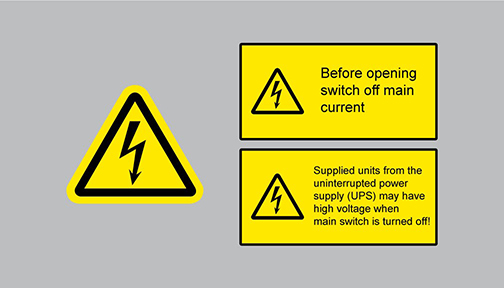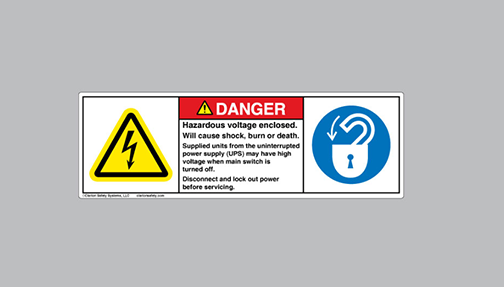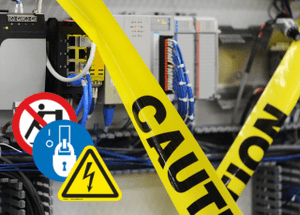Safety Label Consolidation Opportunities

How to Optimize Your
Safety Label Program – for Efficiency and Cost-Savings
Labels are an integral part of the safety, warnings and
instructional messaging on today’s equipment and products. Yet, they’re often easy
to be looked at as an afterthought, low priority, or separate from a
big-picture buying process for businesses. There’s a way to create effective
warnings programs that not only increase safety, but are also in line with the
cost structures you want to keep. It all begins with prioritizing your label
program – and taking a deep dive into the labels used on each machine and
across product lines.
Assessing Your Labels
for Compliance
“When it comes to safety, it’s best not to assume you’re
doing things adequately. And don’t downplay the value of your labels; they’re a
critical component of product safety and meeting your legal duty to warn,” says
Angela Lambert, our Director of Standards Compliance here at Clarion Safety. “I
recommend frequent and continuous assessments of labels.”
Contrary to how that may sound, these types of label reviews don’t have to be a lengthy or tedious process. With our goal to help get equipment manufacturers up-to-date – and stay there – Clarion Safety offers ongoing, personalized (and free of charge) safety label assessments to get a better understanding of the ANSI and ISO standards for visual safety and today’s safety communication best practices.
We routinely uncover issues in label design like incorrect word messages, symbols or color as well as issues in quality, such as using the wrong label material for the application at hand.
Assessing Your Labels
for Cost-Savings
Diligent
review of your label program has many benefits. There’s no question that
product liability issues can be
costly, both in terms of the health and safety of those using your equipment
and in out-of-pocket expenses should a lawsuit result. According to the
Insurance Information Institute, the average product liability injury award in
2015 was $4,868,468. The average defense cost that year was $1,037,580.
However, after nearly 30 years of working with clients on assessments, we often find tangible, cost-savings benefits as well. The chart, below, shows some of the typical budgetary and efficiency challenges equipment manufacturers and their purchasing departments face in relation to labels, and ways to solve them once their label program is reviewed in full.
| TYPICAL CHALLENGE | POTENTIAL SOLUTION |
| Juggling multiple vendors | Once your full label program is reviewed, you may find that one source is available for both your safety and custom labeling needs, instead of many, so you can centralize purchasing and streamline your supply chain. |
| Inventory management | Services like kitting, printing sheets of labels rather than individual ones, and other best practice purchasing solutions can mean abandoning antiquated inventory management practices or using third party resources, for better efficiency and reduced costs. |
| Meeting budget constraints | When your label program is reviewed holistically, often times, instead of a ‘wallpaper’ of many competing and conflicting labels, only one label with a complete message is needed. These types of consolidation opportunities can result in significant cost-saving across machines, product lines and markets. |
Case in Point: Moving
Beyond a ‘Wallpaper’ of Messages
The bottom line is that unoptimized warnings aren’t as
effective at being understood by viewers. Consolidating warnings means better
communication – AND cost-savings by using less labels.
What do we mean by an unnecessary ‘wallpaper’ of warnings and instructional messages on a machine? Take a look at the example, below, based on working with a client on electrical hazard safety labels for their machine. After their personalized Clarion Safety assessment, they were able to use just one, best practice ANSI/ISO label in place of three outdated ones.
Before a Clarion Safety Assessment:

After a Clarion Safety Assessment:

Better Labels – By
the Numbers
How significant can the cost-savings be? Consider a customer
of ours that used over 20 labels on one machine. Their assessment led to
consolidating their labels down to only a dozen, as well as placing them on one
sheet, rather than individual labels, meaning only one part number for reorders.
The tangible benefits to their business, not to mention better standards
compliance and liability avoidance, included:
- Over 20% reduction in label costs per machine
- The reduction of 20 part numbers, improving operational efficiency
- One sheet of labels per machine for more efficient production operations, including less room for human error
Next Steps for Product Safety and Cost-Savings
If you’re interested in learning more about applying these ideas
to your products and your business, contact us today for an assessment. Our
team at Clarion Safety has worked to make this process as simple as possible
for both purchasing departments and engineering teams; provide us with images
of your current labels and we do all the rest. Learn more about our
safety
label assessments
today – for the best in product safety, risk
reduction and cost-savings!



